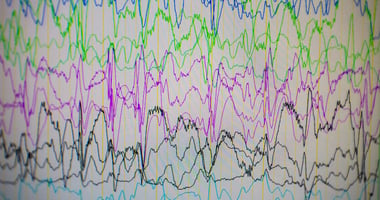Women with first-onset episodes of severe postpartum psychiatric disorders had all-cause mortality...
MRI May Predict Which Patients Will Develop Treatment-Resistant Schizophrenia

A neuromelanin-sensitive MRI (NM-MRI) may successfully predict which patients with first-episode psychosis will eventually develop treatment-resistant schizophrenia, according to a study published today in AJP in Advance. Neuromelanin is a brain pigment that is a by-product of dopamine metabolism and therefore can be a visual indicator of healthy dopamine functioning.
“[T]here is an urgent need for markers to identify treatment nonresponders in schizophrenia at an early stage and facilitate timely initiation of clozapine, the only antipsychotic with proven efficacy in nonresponders,” wrote Marieke van der Pluijm, Ph.D., of the University of Amsterdam and colleagues. Patients with treatment-resistant schizophrenia do not show increased dopamine function, unlike patients who respond to treatment, van der Pluijm and colleagues continued. This suggests that neuromelanin levels—a proxy of dopamine function—may be an early marker for treatment resistance.
The researchers recruited 62 patients aged 18 to 35 years with first-episode psychosis whose primary diagnosis was on the schizophrenia spectrum. They also recruited 20 healthy controls. All participants were assessed at baseline with an NM-MRI scan, a clinical interview, and an IQ test. Symptom severity was assessed using the Positive and Negative Syndrome Scale (PANSS). Patients received antipsychotic treatment from their psychiatrists throughout the study.
Treatment response was assessed with a clinical interview at six months. Participants were considered nonresponsive if they continued to show moderate or higher symptoms on at least one of five PANSS domains (delusions, conceptual disorganization, hallucinatory behavior, mannerisms and posturing, and unusual thought content) following two trials of antipsychotics; if they showed a complete absence of response or experienced severe side effects following one antipsychotic trial; or if they were switched to clozapine during the follow-up period.
Fifteen patients were classified as nonresponders, while the remaining 47 were considered responders. In the baseline NM-MRI, nonresponders showed significantly lower NM-MRI signal compared with responders, predominantly in a brain region called the substantia nigra. This region is rich in dopamine neurons and regulates movement as well as emotions and reward behaviors. Based on the neuromelanin composition, the researchers could predict whether a patient would respond to treatment with up to 68% accuracy.
Among 28 responders and 9 nonresponders who participated in a follow-up scan, the NM-MRI signal did not change over six months in either group. This indicates that neuromelanin accumulation might reflect a stable trait, rather than a variable that is dependent on an individual’s state.
“[T]his study demonstrates the potential of NM-MRI as a noninvasive marker for treatment resistance in schizophrenia at an early stage,” the authors concluded. “Eventually, an adequate prediction model could lead to early identification of treatment resistance in schizophrenia and thereby substantially reduce delays in effective treatment and improve outcomes.”
For related information, see the Psychiatric News Alert “Speed of Response to Visual Stimuli May Be Biomarker for Psychosis.”
(Image: Getty Images/iStock/Jacob Wackerhausen)
Don't miss out! To learn about newly posted articles in Psychiatric News, please sign up here.





